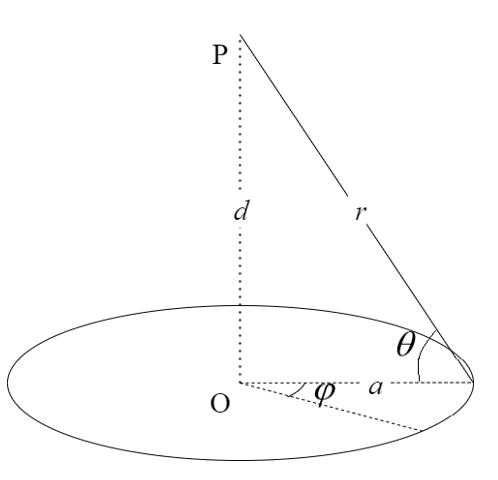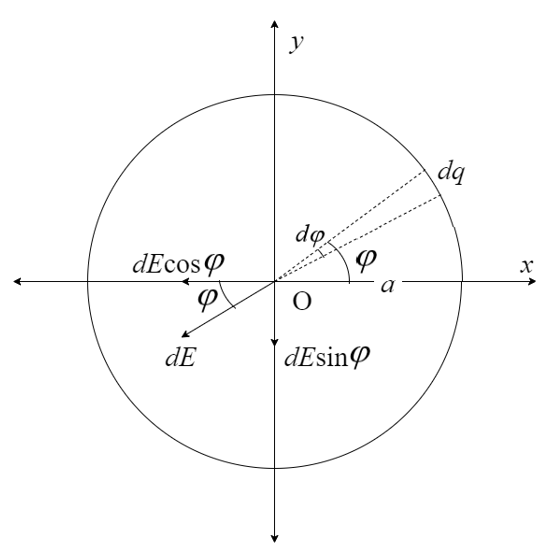Q5/ A circular ring of radius a (meter) has a non-uniform line charge density pL = 2 cos Ø C/m on its perimeter. The ring is located at the z-0 plane, where its center is located at the origin. Find the electric field intensity at: a) The centre of the ring. b) The point (0,0,4).

Consider the schematic of the given problem as shown below:

Here, O and P are the origin and the given point a distance d above the origin, respectively. The ring-charge has the radius a. As shown, φ represents the angle with respect to the x-axis and θ is the angle between the distance (r) of P from the charge and the x-axis.
a)
The electric field at the origin can be visualized as shown by the following schematic:

Here, the charge polarity of the right half of the ring is positive since cosφ is positive there, while it is negative on the other half.
The field due to the charge segment (dq) and another segment exactly opposite to it is exactly equal since cos(π – φ) is – cosφ.
Due to the symmetry of the cosine function about the x-axis (cos(–φ) = cosφ), all the sine components get canceled. Due to the opposite polarity across the y-axis, however, all the cosine components get doubled.
Evaluate E from Coulomb’s formula as follows:
Step by step
Solved in 5 steps with 3 images









